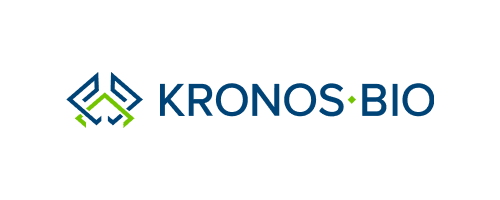Kronos Bio Simplifies and
Streamlines Study Builds
"The simplicity of the system is mind-boggling to me. It’s so much more flexible, without all of the custom programming that had to be done in the more archaic systems."
Veeva EDC Delivers Agility and Speed in Complex Oncology Trials
As a clinical-stage biopharmaceutical company, Kronos Bio wanted an easy, efficient build process for its oncology studies, but struggled with the limitations of a traditional EDC system. Historically, building the study database was laborious and required extensive custom programming. Complex casebooks and forms had to be pre-built to accommodate variations, and back-and-forth UAT cycles with the EDC vendor created delays and frustration.
Given the costs and constraints, Kronos Bio couldn’t build the trials it wanted. In one case, the casebook went live with a fraction of the actual study cycles because the legacy EDC system was so slow to configure. “We wanted to start with 20 cycles but ended up with eight because adding those next 12 cycles would take an extra week of building,” explains Jennifer Neumann, director, clinical data management and programming.
Modernizing EDC with Agile Design
Kronos Bio decided to reinvent its study build process by adopting an Agile Design methodology with Veeva Vault EDC. The new approach combined a modern EDC system with process improvements to shorten build times and better support complex protocol designs.
Kronos engaged Veeva for a proof of concept to build a template study with forms created from CDISC standards and Kronos’s prior studies. The proof of concept enabled stakeholders to better understand and leverage Veeva EDC’s functionality in their first real study build. In addition, having a library in place for the initial build meant Kronos saved time by reusing forms. They will save even more time going forward by using library forms that are already user acceptance tested.
Director of Clinical Data Management Jennifer Neumann discusses how her oncology biotech switched to Veeva Clinical Data for faster, more flexible builds.
Creating Casebooks Directly from the Protocol
The data management team quickly realized the advantages of Agile Design when partnering with Veeva on the first study build.
Previously, Kronos would produce a detailed specification document for its EDC vendor to build the study database. To write and review the specification could take weeks, even months, of effort.
The new build process did away with the upfront specification. Instead, Veeva study designers configured casebooks directly from the study protocol and forms library, plus the schedule of assessments and a few mockups of study-specific forms. “Building from the protocol and our standards helped things go very fast,” Neumann concluded.
Simplifying the Build Process for Complex Studies
Veeva EDC also eliminated the need to predict, test, and validate every variation in the study. Productized, rules-driven dynamics automatically added and amended assessments based on the study design and patient journey. These dynamic study elements replaced pre-built cycles, visits, and forms, significantly reducing the setup challenge.
“I love that we were able to use dynamics instead of pre-building every possible permutation,” says Neumann. “Having it be so simple was just mind boggling to me. It’s so much more flexible, without all the custom programming that had to be done in the more archaic systems.”
Neumann also said the benefit was passed on to research sites. “Fields only become visible if they’re necessary based on prior answers,” she commented. This makes it less confusing for the research sites to complete the forms without making mistakes.
Real-Time EDC Updates in Online Reviews
During the build process, Kronos met virtually with Veeva to ensure that the EDC was capturing the right data and running the appropriate checks. The team walked through the EDC screens, guided by a differential report that identified changes made since the last review. Discussing and making database updates in real-time streamlined the feedback process.
“The design review meetings were a really great experience,” says Neumann. “A lot of times the updates could be made while we were on the call, and we could see the changes right away. With the old EDC system, updates took so long to make it was easy to forget what was requested, and why.”
Major Database Change in Three Days
The flexibility of Vault EDC and Veeva’s Agile Design process paid off when Kronos had to make a major structural change to the study protocol after the database was built. “We ran into some different standard of care practices at different sites,” reports Neumann, which added unexpected complexity to the trial design.
The company amended the protocol to support variations in how patients are treated, and then Veeva updated the database to reflect the change. “We were able to make those changes in one day for the configuration and two days for the rules,” Neumann reports. The ability to quickly pivot kept the study timeline intact.
Seamless Integration with IRT Software
Kronos integrated Veeva EDC with 4G Clinical’s Prancer RTSM® to improve data quality and accelerate execution when managing complex oncology studies.
The two systems share an Agile Design approach that increases the speed and efficiency of the build process. Neumann says configuring 4G Clinical’s system was as easy as configuring Vault EDC. In both cases, instead of manually building all combinations of dose and schedule, the two systems dynamically generate exactly what’s needed, when it’s needed.
Constraint-Free Trial Design
Kronos Bio can now advance its pipeline of oncology drug candidates with a modern EDC solution for study builds. The technology and process improvements in Agile Design simplify complex builds and accelerate study startup. “Agile Design really does make a difference,” Neumann asserts. “The whole build process is much faster and much easier for everyone involved.”
Most importantly, Kronos Bio can design and execute the studies it wants with Veeva EDC. Veeva’s level of flexibility and control are now considered critical for the complex study designs needed in oncology trials. “Switching was a great decision,” Neumann concludes. “I wish we would’ve switched sooner because Veeva EDC makes our lives easier and saves us time. It was well worth any time spent making the transition.”



